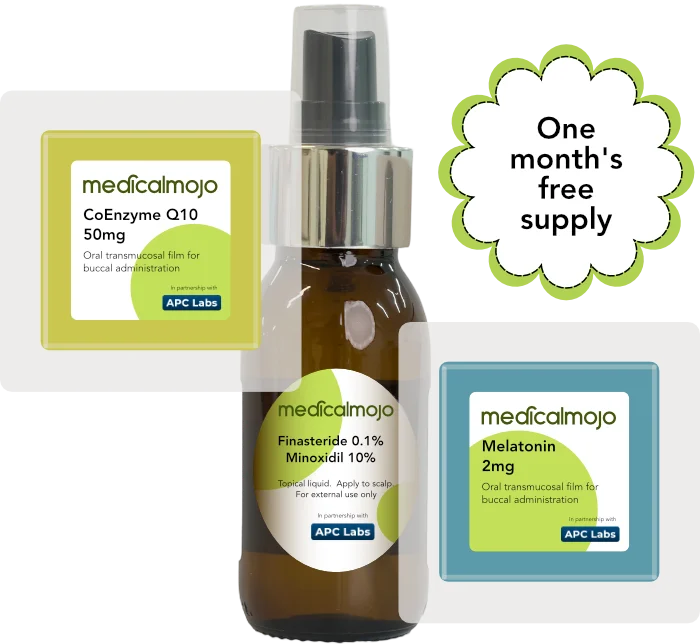Due to the recent concerns regarding finasteride and its links to erectile dysfunction, depression and suicide, many men are searching for safer “natural” products. Rosemary oil is one of these natural alternatives for hair loss that has recently gained much attention. But is it any good? This is what this blog hopes to discover. So, what will prove better for our follicular development, nature or scientific nurture?
Table of contents
- Does rosemary oil help with hair loss?
- What is androgenetic alopecia?
- Does rosemary oil work for hair loss?
- Botany
- What does rosemary oil contain?
- A clinical trial of rosemary oil for hair loss…in humans
- How well does rosemary oil block DHT….in mice?
- Origins of rosemary oil
- Medicinal uses of rosemary oil through history
- Anti-inflammatory properties of Rosemary oil
- Antifungal properties of rosemary oil
- Other properties of rosemary oil
- Summary
- Safety of finasteride
- References:
-
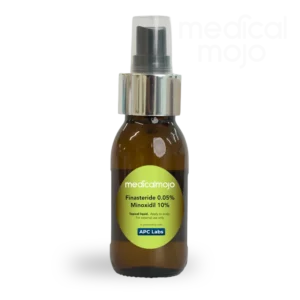 Finasteride 0.05% Minoxidil 10% Topical Hair Loss LiquidPrice range: £27.99 through £167.94
Finasteride 0.05% Minoxidil 10% Topical Hair Loss LiquidPrice range: £27.99 through £167.94 -
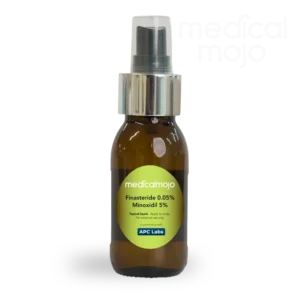 Finasteride 0.05% Minoxidil 5% Topical Hair Loss LiquidPrice range: £27.99 through £167.94
Finasteride 0.05% Minoxidil 5% Topical Hair Loss LiquidPrice range: £27.99 through £167.94 -
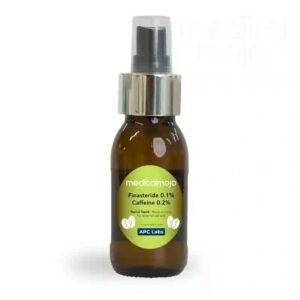 Finasteride 0.1% Caffeine 0.2% Topical Hair Loss LiquidPrice range: £20.99 through £125.94
Finasteride 0.1% Caffeine 0.2% Topical Hair Loss LiquidPrice range: £20.99 through £125.94
Does rosemary oil help with hair loss?
Well, they say a picture tells 1000 words, so we will let this one do the talking.
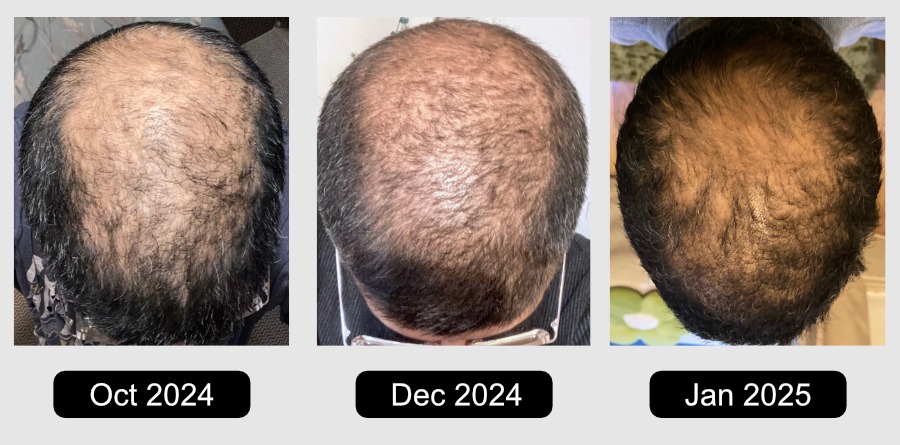
Still not convinced? Well, let’s dive down into the science.
What is androgenetic alopecia?
Before we dive into the details behind rosemary oil’s wonders, let’s take a quick primer on male-pattern and female-pattern baldness or to use the scientific term, androgenetic alopecia.
Androgenetic alopecia, also known as male or female pattern hair loss, is a long-term condition where people with a genetic predisposition gradually lose hair due to the effects of certain hormones called androgens. Specifically, a hormone called dihydrotestosterone (DHT) binds to receptors in the scalp, causing hair follicles to shrink over time [1].
What does androgenetic alopecia look like?
In men, this hair loss typically appears as a receding hairline and thinning at the crown, while women often retain their frontal hairline but lose hair in the top and central parts of the scalp [2].
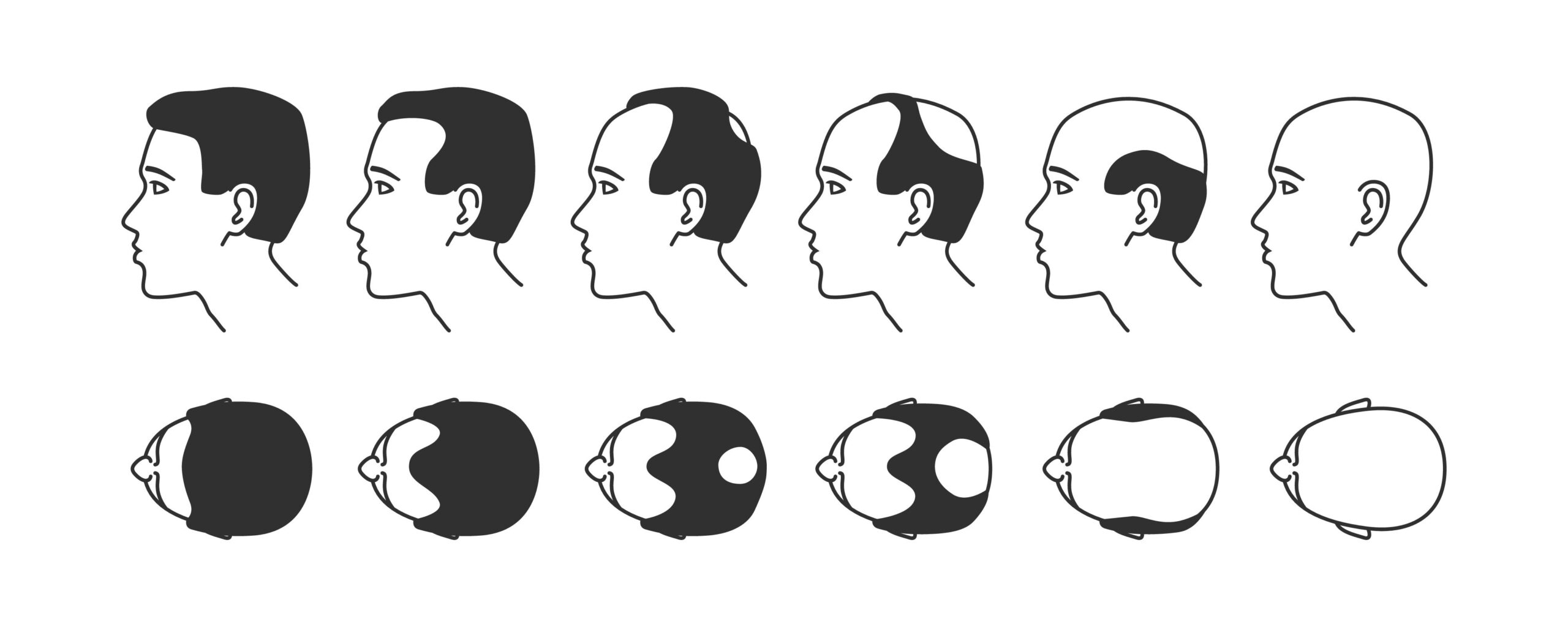
Is androgenetic alopecia genetic?
The condition is influenced by maternal and paternal genes, with a higher likelihood of occurrence in individuals with a family history of hair loss. For example, sons of fathers with androgenetic alopecia have a five times greater risk [3].
The key hormone involved is dihydrotestosterone (DHT), which binds to receptors in the scalp and causes hair follicles to shrink, leading to thinner, weaker hair. Studies also show that people with this condition have an imbalance in their hair growth cycle, with shorter growth phases compared to normal hair [4].
Androgenetic alopecia and DHT
Androgenetic alopecia usually appears after puberty due to its link with hormones. For instance, individuals who were castrated before puberty or those with androgen insensitivity syndrome do not develop this type of hair loss [3].
Men with androgenetic alopecia tend to have higher levels of DHT, linked to increased activity of the enzyme 5-alpha reductase, which converts testosterone into DHT.
The role of androgens in hair loss is less clear in women, as some women experience pattern hair loss without having excess androgens. Genetic predisposition and other factors likely play a role.
Diagnosing androgenetic alopecia
When diagnosing androgenetic alopecia, it’s important to rule out hair loss from other causes, such as iron deficiency or thyroid issues.
Does rosemary oil work for hair loss?
Botany
OK, it’s time to bamboozle you with some cool-sounding Latin names. Rosemary, scientifically known as Rosmarinus officinalis L., is an ancient herb from the Lamiaceae family [3].
What does rosemary oil contain?
Rosemary oil contains important bioactive compounds like:
- carnosic,
- ursolic,
- oleanolic,
- micromeric acids,
- caffeic acid,
- rosmarinic acid,
- 12-methoxycarnosic acid
These ingredients are known for their antioxidant, antimicrobial, and anti-inflammatory properties.
Rosemary oil has been shown to be effective in treating androgenic alopecia (hair loss) in a way similar to minoxidil 2% [5]. It improves blood flow and circulation to the scalp, helping hair follicles regenerate.
A clinical trial of rosemary oil for hair loss…in humans
In a clinical trial, 100 men aged 18–49 with androgenic alopecia were randomly divided into two groups: one group received topical rosemary oil, and the other received 2% minoxidil.
After 6 months, both groups had a significant increase in hair count. There was no major difference in hair count between the two groups, but people using minoxidil experienced more scalp itching than those using rosemary oil [5]
How well does rosemary oil block DHT….in mice?
A study using mice tested the anti-androgenic effects of rosemary leaf extract compared to finasteride and minoxidil.
The focus was on how well these substances could block an enzyme called 5-alpha-reductase, which converts testosterone into DHT.
The results showed that rosemary extract was very effective in blocking this enzyme, with an 82.4% reduction at a 200 mg/mL dose and a 94.6% reduction at 500 mg/mL.
In comparison, finasteride at 250 nM only showed an 81.9% reduction. This action helps prevent the hormone dihydrotestosterone (DHT) from binding to receptors that cause hair loss. Further research pointed to 12-methoxycarnosic acid as the main active compound responsible for this effect [6].
More studies are needed to confirm the potential benefits of rosemary oil for treating hair loss. However, it has shown good tolerance in tests, with minimal irritation.
Have you become a fan of rosemary oil yet? Well, if you have, you’re in for a treat. We have included more details about rosemary oil, from its history to its other therapeutic benefits.
Origins of rosemary oil
Rosemary is a hardy evergreen shrub that originated in the Eastern Mediterranean but has spread worldwide over the centuries as both a medicinal herb and an ornamental plant.
In ancient Greece, it was called “antos,” meaning “flower,” and was often burned as incense due to its aromatic scent [7]. Its use dates back to around 500 B.C. in the Greek and Roman empires and even earlier in ancient Egypt.
In Egypt, rosemary traces have been found in tombs from as far back as 3000 B.C., where it was used to perfume the deceased for their journey to the afterlife [8].
Additionally, Egyptians combined rosemary with other natural ingredients like thyme and cedar to create sun-protective creams. Rosemary was also believed to have reached China by approximately 220 B.C. [3].
Medicinal uses of rosemary oil through history
Rosemary has been used medicinally for centuries, with records dating back to ancient times.
Historically, due to its antispasmodic properties, it was used to relieve renal colic and menstrual pain [9].
The Romans are believed to have introduced Rosmarinus officinalis to Great Britain, where it was used in symbolic rituals and practical applications [3].
During the 14th century, rosemary was used as an inhaled disinfectant and decongestant during the Great Plague, helping travellers through plague-stricken areas. Later, during World War II, it was combined with other herbs and burned in French hospitals to disinfect the air [10].
Anti-inflammatory properties of Rosemary oil
Rosemary oil has powerful anti-inflammatory effects, making it a valuable option for medicinal use.
These effects are due to its bioactive compounds, including:
- carnosic acid,
- ursolic acid,
- oleanolic acid, and
- micromeric acid,
which work together to suppress inflammation [11].
A study by Ai-Hsiang et al. highlighted that carnosic acid, found in many natural herbs like rosemary, can significantly reduce nitric oxide levels—a key pro-inflammatory molecule [12].
Additionally, carnosol, another compound in rosemary, was shown to decrease nitric oxide production stimulated by lipopolysaccharides (LPS) and block nuclear factor-kB, both of which play a role in the inflammatory process [12].
Research also demonstrated that rosemary can inhibit 82% of platelet aggregation, 71.8% of nitric oxide production, and 91.8% of free radical generation [13].
These findings emphasise rosemary oil’s potent anti-inflammatory and antioxidant benefits.
This anti-inflammatory effect is helpful when treating androgenetic alopecia (AGA) because people with this condition often have inflammation around their hair follicles. A study by Lattan and Johnson showed that about half of the 300 biopsy samples taken from AGA patients had noticeable inflammation around the hair follicles, mostly of certain types of immune cells [14].
Many other studies have found similar results, showing inflammation around blood vessels and hair follicles in AGA patients.
Antifungal properties of rosemary oil
Research has shown that when applied to the skin, rosemary oil can help fight fungal infections.
It’s been particularly effective against types of fungi like Candida albicans and Candida krusei, which are common causes of skin infections [15].
Other properties of rosemary oil
Rosemary oil also has antioxidant properties [3] and can provide UV protection [3].
Summary
There is some robust scientific evidence behind the claims of rosemary oil’s ability to reduce and reverse hair loss. Although not as potent as full-strength minoxidil, it nonetheless offers an attractive solution to those who want a more natural solution.
Medical Mojo is working on formulating its own rosemary oil blend for optimal hair growth. For updates, subscribe to our newsletter or social media channels.
-
 Finasteride 0.1% Caffeine 0.2% Topical Hair Loss LiquidPrice range: £20.99 through £125.94
Finasteride 0.1% Caffeine 0.2% Topical Hair Loss LiquidPrice range: £20.99 through £125.94 -
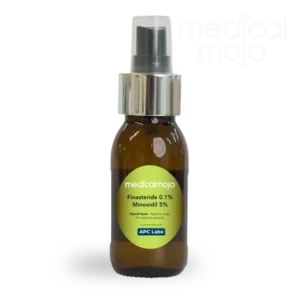 Finasteride 0.1% Minoxidil 5% Topical Hair Loss SolutionPrice range: £27.99 through £159.99
Finasteride 0.1% Minoxidil 5% Topical Hair Loss SolutionPrice range: £27.99 through £159.99 -
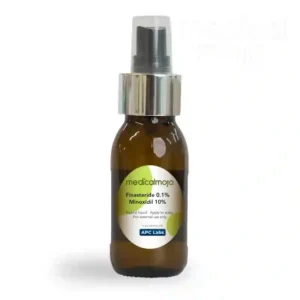 Finasteride 0.1% Minoxidil 10% Topical Hair Loss SolutionPrice range: £29.99 through £170.99
Finasteride 0.1% Minoxidil 10% Topical Hair Loss SolutionPrice range: £29.99 through £170.99
Safety of finasteride
The Medicines and Healthcare products Regulatory Agency (MHRA) is introducing a patient alert card for men taking finasteride to raise awareness about possible psychiatric and sexual side effects, including depression, suicidal thoughts, and sexual dysfunction.
Patients are advised to read the medicine leaflet and seek medical advice immediately if they notice mood changes or sexual health issues.
If you are concerned about the safety of using finasteride for male pattern baldness please contact us and one our prescribers will go over the risks and benefits.
At Medical Mojo we can reduce the risks associated with finasteride by compounding it as a topical solution. This means there is less systemic absorption and hence fewer side effects.
To learn more, read our blog: How to reduce the side effects of finasteride
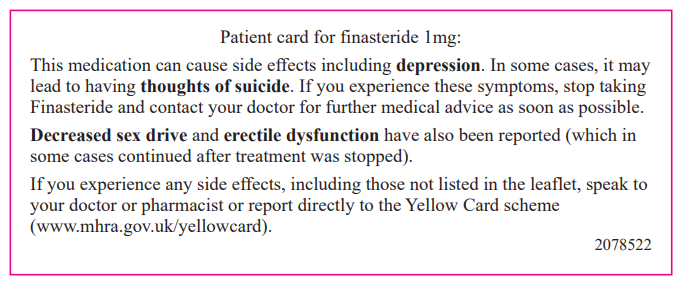
Disclaimer: This information is for educational purposes only and is not a replacement for professional medical advice.
References:
- Devjani S, Ezemma O, Kelley KJ, Stratton E, Senna M. Androgenetic alopecia: therapy update. Drugs. 2023;83(8):701–715
- Sasaki GH. Review of human hair follicle biology: dynamics of niches and stem cell regulation for possible therapeutic hair stimulation for plastic surgeons. Aesthetic Plast Surg. 2018;43(1):253–266.
- Bin Rubaian, N.F., Alzamami, H.F.A. and Amir, B.A., 2024. An Overview of Commonly Used Natural Alternatives for treating Androgenetic Alopecia, with Special Emphasis on Rosemary Oil. Clinical, Cosmetic and Investigational Dermatology, pp.2495-2503.
- Natarelli N, Gahoonia N, Sivamani RK, et al. Integrative and mechanistic approach to the hair growth cycle and hair loss. J Clin Med. 2023;12(3):893.
- Murata K, Noguchi K, Kondo M, et al. Promotion of hair growth by Rosmarinus officinalis leaf extract. Phytother Res. 2012;27(2):212–217
- Panahi Y, Taghizadeh M, Marzony ET, Sahebkar A.Rosemary oil vs minoxidil 2% for treating androgenetic alopecia: a randomised comparative trial. Skinmed. 2015;13(1):15–21.
- Ribeiro-Santos R, Carvalho-Costa D, Cavaco T, Rodrigues A. A novel insight into an ancient aromatic plant: the rosemary (Rosmarinus officinalis L.). Trends Food Sci Technol. 2015;45(2):355–368.
- Nicholson P, Shaw I. Ancient Egyptian materials and technology. Am J Archaeol. 2001;105(2):338–340.
- AI-Sereiti MR, Abu-Amer KM, Sen P. Pharmacology of rosemary (Rosmarinus officinalis Linn.) and its therapeutic potentials. Indian J Exp Biol. 1999;37(2):124–130.
- Borges RS, Ortiz BLS, Pereira AS, Keita H, Carvalho JCT. Rosmarinus officinalis essential oil: a review of its phytochemistry, anti-inflammatory activity, and mechanisms of action involved. J Ethnopharmacol. 2019;229:29–45.
- Reuter J, Merfort I, Schempp CM, Mönting J, Schempp C. Sage extract rich in phenolic diterpenes inhibits ultraviolet-induced erythema in vivo. Planta Med. 2007;73(11):1190–1191. doi:10.1055/s-2007-981583
- Lo AH, Liang YC, Lin-Shiau SY, Ho CT, Lin JK. Carnosol, an antioxidant in rosemary, suppresses inducible nitric oxide synthase through down-regulating nuclear factor-?B in mouse macrophages. Carcinogenesis. 2002;23(6):983–991.
- Yimam M, Jiao P, Hong M, et al. A standardised composition comprised of extracts from Rosmarinus officinalis, Annona squamosa and Zanthoxylum clava-herculis for cellulite. Pharmacogn Res. 2017;9(4):319.
- Lattanand A, Johnson WC. Male pattern alopecia: a histopathologic and histochemical study. J Cutan Pathol. 1975;2(2):58–70.
Are weight loss treatments making you tired, or have they led to a sudden increase in hair loss? Do you struggle with sleep?
Get a free month’s supply of one of our compounded treatments for energy, hair loss or sleep, with your first purchase of Mounjaro or Wegovy from Medical Mojo.
Claim your FREE offer